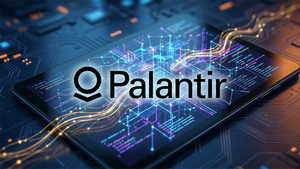– Vutrisiran Met All 18 Month Secondary Endpoints, Including Statistically Significant Improvements in Neuropathy Impairment, Quality of Life (QoL), Gait Speed, Nutritional Status and Overall Disability, Relative to External Placebo –
– Vutrisiran Continued to Demonstrate Halting or Reversal of Polyneuropathy, with Improvements in Neuropathy Impairment and QoL Relative to Baseline –
– Exploratory Cardiac Data, Including Reduced Technetium Uptake Relative to Baseline in Majority of Assessable Patients, Continue to Support Potential for Vutrisiran to Reduce Cardiac Amyloid Burden and Improve Cardiac Manifestations of Disease –
– In Addition, Vutrisiran Continued to Demonstrate Encouraging Safety and Tolerability Profile –
– Alnylam to Host Conference Call Today at 8:30 am ET –
Alnylam Pharmaceuticals, Inc. (Nasdaq: ALNY), the leading RNAi therapeutics company, announced today that the HELIOS-A Phase 3 study of vutrisiran, an investigational RNAi therapeutic in development for the treatment of transthyretin-mediated (ATTR) amyloidosis, met all secondary endpoints measured at 18 months in patients with hATTR amyloidosis with polyneuropathy, including statistically significant improvements in neuropathy impairment, quality of life (QoL), gait speed, nutritional status and overall disability, relative to placebo, and non-inferiority of serum TTR reduction relative to the within-study patisiran arm. The results were presented today in an oral session at the Société Francophone du Nerf Périphérique (SFNP) Annual Meeting.
In HELIOS-A, patients treated with vutrisiran also showed improvement in exploratory cardiac endpoints including NT-proBNP and echocardiographic parameters relative to placebo, as well as technetium uptake, relative to baseline, in a planned cohort of patients. Vutrisiran also continued to demonstrate an encouraging safety and tolerability profile consistent with the previously reported Month 9 results. Alnylam previously announced that HELIOS-A met its primary and secondary endpoints at 9 months and study results were presented at the 2021 American Academy of Neurology (AAN) Virtual Annual Meeting.
“These HELIOS-A results show that the improvement in neuropathy impairment and quality of life observed with vutrisiran at 9 months is maintained through Month 18, with the treatment effect increasing over time and an encouraging safety profile. Further, we are encouraged by the exploratory cardiac endpoint results, particularly new data indicating that 18 months of vutrisiran treatment resulted in reduced technetium uptake in the heart compared to baseline in the majority of patients who were in a planned cohort, suggesting the potential for amyloid regression. We look forward to seeing data from the APOLLO-B and HELIOS-B studies, which are investigating the potential of patisiran and vutrisiran, respectively, to treat the cardiac manifestations of disease in patients with ATTR amyloidosis with cardiomyopathy,” said Rena N. Denoncourt, Vice President, TTR Franchise Lead. “Vutrisiran is currently under review by multiple regulatory authorities around the world, bringing us a step closer to potentially making this low-dose, once-quarterly, subcutaneously administered treatment option available for patients living with the polyneuropathy of hATTR amyloidosis, and furthering our efforts to build an industry-leading franchise of medicines for the treatment of ATTR amyloidosis.”
HELIOS-A 18-Month Study Results
At 18 months, vutrisiran met all secondary endpoints in HELIOS-A, demonstrating statistically significant improvement in clinical endpoints compared to placebo and non-inferiority in serum TTR reduction compared to the within-study patisiran arm, specifically:
-
Vutrisiran treatment (N=122) resulted in a 0.46 point mean decrease (improvement) in the modified Neuropathy Impairment Score (mNIS+7) from baseline at 18 months as compared to a 28.09 point mean increase (worsening) reported for the external placebo group (N=77), resulting in a 28.55 point mean difference relative to placebo (p equal to 6.5x10-20).
- Vutrisiran treatment also resulted in an mNIS+7 improvement relative to baseline at 18 months in 48 percent of patients, compared with 4 percent of patients who received placebo.
-
Vutrisiran treatment resulted in a 1.2 point mean decrease (improvement) in Norfolk QoL-DN score from baseline at 18 months as compared to a 19.8 point mean increase (worsening) reported for the external placebo group, resulting in a mean 21.0 point difference relative to placebo (p equal to 1.8x10-10).
- Fifty-seven percent of patients treated with vutrisiran experienced improvement in quality of life relative to baseline at 18 months, compared with 10 percent of patients who received placebo.
-
Vutrisiran achieved statistically significant improvement in gait speed (10-MWT), nutritional status (mBMI), and disability (R-ODS) at 18 months, compared with the external placebo group.
- Vutrisiran treatment resulted in a 0.024 meters/second mean decrease in 10-MWT from baseline at 18 months as compared to a 0.264 meters/second mean decrease in the external placebo group, resulting in a mean 0.239 meters/second increase relative to placebo (p equal to 1.2x10-7).
- Vutrisiran treatment resulted in a 25.0 point mean increase (improvement) in mBMI from baseline at 18 months as compared to a 115.7 point mean decrease in the external placebo group, resulting in a 140.7 point mean increase relative to placebo (p equal to 4.2x10-15).
- Vutrisiran treatment resulted in a mean decrease of 1.5 points from baseline in R-ODS at 18 months as compared to a 9.9 point mean decrease in the external placebo group, resulting in an 8.4 point mean increase relative to placebo (p equal to 3.5x10-15).
- As expected, non-inferiority of vutrisiran serum TTR reduction, relative to the within-study patisiran reference comparator, was established. Vutrisiran achieved a rapid and sustained reduction of serum TTR at 18 months, with a mean reduction from baseline of 88 percent.
-
Patients treated with vutrisiran also showed the potential for improvement across exploratory cardiac endpoints.
- Compared to placebo, patients in the vutrisiran arm demonstrated improvement in NT-proBNP, a biomarker of cardiac stress, with an adjusted geometric fold change in the vutrisiran patients of 0.94 and a change in placebo patients of 1.96 for a nominal p-value of 9.6x10-10.
- Patients treated with vutrisiran also demonstrated a trend towards improvement (nominal p values) in echocardiographic parameters, relative to placebo including cardiac output (p=1.144 x10-5), LV end diastolic volume (p=4.021 x10-5), Global longitudinal strain (p=0.3182) and mean LV wall thickness (p=0.5228).
- In a planned cohort, vutrisiran also reduced cardiac uptake of technetium on scintigraphy imaging, relative to baseline, providing potential evidence of reduced amyloid burden in the heart. 68 percent of patients improved in technetium uptake as assessed by normalized left ventricular total uptake and 65 percent of patients demonstrated improvement in assessment of heart to contralateral lung ratio. Furthermore, 28 percent showed a one grade or greater improvement in the Perugini grading scale, with 68 percent of patients maintaining a stable Perugini grade at Month 18, relative to baseline.
Vutrisiran demonstrated an encouraging safety profile in HELIOS-A at 18 months. There were three study discontinuations (2.5 percent) due to adverse events in the vutrisiran arm by Month 18, one due to a non-fatal event of heart failure and two due to deaths, neither of which was considered related to the study drug. During the 18-month treatment period there were two serious adverse events (SAEs) deemed related to vutrisiran by the study investigator, consisting of dyslipidemia and urinary tract infection. The two deaths and the two related SAEs were previously reported at Month 9.
Treatment emergent adverse events (AEs) occurring in 10 percent or more patients included fall, pain in extremity, diarrhea, peripheral edema, urinary tract infection, arthralgia and dizziness; with the exception of pain in extremity and arthralgia, each of these events occurred at a similar or lower rate as compared with external placebo. Injection site reactions (ISRs) were reported in five patients (4.1 percent) and were all mild and transient. There were no clinically significant changes in liver function tests (LFTs).
To view the data presented by Alnylam at SFNP, please visit, Capella
“The 18-month results of the HELIOS-A Phase 3 study build on the results observed at 9 months and continue to underscore the potential of vutrisiran as an attractive new treatment option that can be administered subcutaneously four times a year,” said David Adams, M.D., Ph.D., Department of Neurology, Bicetre hospital, Greater Paris University Hospitals, AP-HP, University Paris Saclay and Principal Investigator for the HELIOS-A trial. “The data presented today are exciting, demonstrating additional progress from ongoing research focused on meeting the needs of this diverse group of patients living with a progressive, life-threatening, multi-system disease, with a potential new option that may help simplify their treatment.”
Filing and Review Status
Vutrisiran is under review by the U.S. Food and Drug Administration (FDA), the European Medicines Agency (EMA), the Brazilian Health Regulatory Agency (ANVISA) and the Japanese Pharmaceuticals and Medical Devices Agency (PMDA). Vutrisiran has been granted Orphan Drug Designation in the U.S. and the European Union (EU) for the treatment of ATTR amyloidosis. Vutrisiran has also been granted a Fast Track designation in the U.S. for the treatment of the polyneuropathy of hATTR amyloidosis in adults. In the U.S., vutrisiran has received an action date under the Prescription Drug User Fee Act (PDUFA) of April 14, 2022. The Company received Orphan Drug Designation in Japan for transthyretin type familial amyloidosis with polyneuropathy.
Conference Call Information
Alnylam Management will discuss the HELIOS-A 18-month results via a conference call on Friday, January 21, 2022, at 8:30 am ET. To access the call, please dial 877-312-7507 (domestic) or +1-631-813-4828 (international) five minutes prior to the start time and refer to conference ID 2239918. A replay of the call will be available beginning at 11:30 am ET on the day of the call. To access the replay, please dial 855-859-2056 (domestic) or +1-404-537-3406 (international) and refer to conference ID 2239918.
About hATTR Amyloidosis
Hereditary transthyretin-mediated (hATTR) amyloidosis is an inherited, progressively debilitating, and fatal disease caused by variants (i.e., mutations) in the TTR gene. TTR protein is primarily produced in the liver and is normally a carrier of vitamin A. Variants in the TTR gene cause abnormal amyloid proteins to accumulate and damage body organs and tissue, such as the peripheral nerves and heart, resulting in intractable peripheral sensory-motor neuropathy, autonomic neuropathy, and/or cardiomyopathy, as well as other disease manifestations. hATTR amyloidosis, represents a major unmet medical need with significant morbidity and mortality affecting approximately 50,000 people worldwide. The median survival is 4.7 years following diagnosis, with a reduced survival (3.4 years) for patients presenting with cardiomyopathy.
About Vutrisiran
Vutrisiran is an investigational, subcutaneously administered RNAi therapeutic in development for the treatment of ATTR amyloidosis, which encompasses both hATTR and wild-type ATTR (wtATTR) amyloidosis. It is designed to target and silence specific messenger RNA, potentially blocking the production of wild-type and variant transthyretin (TTR) protein before it is made. Quarterly, and potentially biannual, administration of vutrisiran may help to reduce deposition and facilitate the clearance of TTR amyloid deposits in tissues and potentially restore function to these tissues. Vutrisiran utilizes Alnylam’s Enhanced Stabilization Chemistry (ESC)-GalNAc-conjugate delivery platform, designed for increased potency and high metabolic stability that may allow for infrequent subcutaneous injections. The safety and efficacy of vutrisiran have not been evaluated by the U.S. Food and Drug Administration, European Medicines Agency, or any other health authority.
About HELIOS-A Phase 3 Study
HELIOS-A (NCT03759379) is a Phase 3 global, randomized, open-label study to evaluate the efficacy and safety of vutrisiran. The study enrolled 164 patients with hATTR amyloidosis with polyneuropathy at 57 sites in 22 countries. Patients were randomized 3:1 to receive either 25mg of vutrisiran (N=122) via subcutaneous injection once every three months or 0.3 mg/kg of patisiran (N=42) via intravenous infusion once every three weeks (as a reference comparator) for 18 months. The efficacy results of vutrisiran in HELIOS-A are compared to the placebo group from the landmark APOLLO Phase 3 study, which evaluated the efficacy and safety of patisiran in a patient population similar to that studied in HELIOS-A. The primary endpoint is the change from baseline in mNIS+7 at 9 months. Secondary endpoints at 9 months are the change from baseline in the Norfolk QoL-DN score and the timed 10-MWT. Changes from baseline in NT-proBNP were evaluated as an exploratory endpoint at 9 months. Additional secondary endpoints at 18 months were evaluated in the HELIOS-A study, including change from baseline in mNIS+7, Norfolk QoL-DN, 10-MWT, modified body mass index (mBMI), Rasch-built Overall Disability Scale (R-ODS), and serum transthyretin (TTR) levels. Additional exploratory cardiac endpoint data at the 18-month time point include NT-proBNP, echocardiographic measures and cardiac amyloid assessments with technetium scintigraphy imaging. Following the 18-month treatment period, all patients are eligible to receive vutrisiran for an additional 18 months as part of the randomized treatment extension where they will receive either 25mg vutrisiran once quarterly or 50mg vutrisiran once every six months.
About RNAi
RNAi (RNA interference) is a natural cellular process of gene silencing that represents one of the most promising and rapidly advancing frontiers in biology and drug development today. Its discovery has been heralded as “a major scientific breakthrough that happens once every decade or so,” and was recognized with the award of the 2006 Nobel Prize for Physiology or Medicine. By harnessing the natural biological process of RNAi occurring in our cells, a new class of medicines, known as RNAi therapeutics, is now a reality. Small interfering RNA (siRNA), the molecules that mediate RNAi and comprise Alnylam’s RNAi therapeutic platform, function upstream of today’s medicines by silencing messenger RNA (mRNA) – the genetic precursors – that encode for disease-causing proteins, thus preventing them from being made. This is a revolutionary approach with the potential to transform the care of patients with genetic and other diseases.
About Alnylam Pharmaceuticals
Alnylam (Nasdaq: ALNY) has led the translation of RNA interference (RNAi) into a whole new class of innovative medicines with the potential to transform the lives of people afflicted with rare and prevalent diseases with unmet need. Based on Nobel Prize-winning science, RNAi therapeutics represent a powerful, clinically validated approach yielding transformative medicines. Since its founding 20 years ago, Alnylam has led the RNAi Revolution and continues to deliver on a bold vision to turn scientific possibility into reality. Alnylam’s commercial RNAi therapeutic products are ONPATTRO® (patisiran), GIVLAARI® (givosiran), OXLUMO® (lumasiran) and Leqvio® (inclisiran) being developed and commercialized by Alnylam’s partner, Novartis. Alnylam has a deep pipeline of investigational medicines, including six product candidates that are in late-stage development. Alnylam is executing on its “Alnylam P5x25” strategy to deliver transformative medicines in both rare and common diseases benefiting patients around the world through sustainable innovation and exceptional financial performance, resulting in a leading biotech profile. Alnylam is headquartered in Cambridge, MA. For more information about our people, science and pipeline, please visit www.alnylam.com and engage with us on Twitter at @Alnylam, on LinkedIn, or on Instagram.
Alnylam Forward Looking Statements
Various statements in this release concerning Alnylam’s expectations, plans, aspirations, and goals, including those related to the investigational therapeutic vutrisiran and its potential as a low-dose, once quarterly, subcutaneously administered treatment option with an encouraging safety profile for patients living with the polyneuropathy of hATTR amyloidosis, the potential for vutrisiran to provide patients living with a progressive, life-threatening, multi-system disease with a new option that may help simplify their treatment, Alnylam’s progress in building an industry-leading franchise of medicines for the treatment of ATTR amyloidosis, the potential of vutrisiran to reduce technetium uptake in the heart resulting in the potential for amyloid regression, the potential of patisiran and vutrisiran to treat the cardiac manifestations of disease in patients with ATTR amyloidosis with cardiomyopathy, the ongoing regulatory review of vutrisiran around the world, including the PDUFA date in the U.S., Alnylam’s aspiration to become a leading biotech company, and the planned achievement of its “Alnylam P5x25” strategy, constitute forward-looking statements for the purposes of the safe harbor provisions under The Private Securities Litigation Reform Act of 1995. Actual results and future plans may differ materially from those indicated by these forward-looking statements as a result of various important risks, uncertainties and other factors, including, without limitation: the direct or indirect impact of the COVID-19 global pandemic or any future pandemic on Alnylam’s business, results of operations and financial condition and the effectiveness or timeliness of Alnylam’s efforts to mitigate the impact of the pandemic; the potential impact of the recent leadership transition on Alnylam’s ability to attract and retain talent and to successfully execute on its “Alnylam P5x25” strategy; Alnylam's ability to discover and develop novel drug candidates and delivery approaches and successfully demonstrate the efficacy and safety of its product candidates; the pre-clinical and clinical results for its product candidates, including vutrisiran and patisiran; actions or advice of regulatory agencies and Alnylam’s ability to obtain and maintain regulatory approval for its product candidates, including vutrisiran, as well as favorable pricing and reimbursement; successfully launching, marketing and selling its approved products globally; delays, interruptions or failures in the manufacture and supply of its product candidates or its marketed products; obtaining, maintaining and protecting intellectual property; Alnylam’s ability to successfully expand the indication for ONPATTRO (or vutrisiran, if approved) in the future; Alnylam's ability to manage its growth and operating expenses through disciplined investment in operations and its ability to achieve a self-sustainable financial profile in the future without the need for future equity financing; Alnylam’s ability to maintain strategic business collaborations; Alnylam's dependence on third parties for the development and commercialization of certain products, including Novartis, Regeneron and Vir; the outcome of litigation; the potential impact of a current government investigation and the risk of future government investigations; and unexpected expenditures; as well as those risks more fully discussed in the “Risk Factors” filed with Alnylam's most recent Quarterly Report on Form 10-Q filed with the Securities and Exchange Commission (SEC) and in its other SEC filings. In addition, any forward-looking statements represent Alnylam's views only as of today and should not be relied upon as representing its views as of any subsequent date. Alnylam explicitly disclaims any obligation, except to the extent required by law, to update any forward-looking statements.
This release is not intended to convey conclusions about efficacy or safety as to any investigational uses or dosing regimens of any investigational RNAi therapeutics. There is no guarantee that any investigational therapeutics or dosing regimens for such therapeutics will successfully complete clinical development or gain health authority approval.
View source version on businesswire.com: https://www.businesswire.com/news/home/20220121005075/en/
Contacts
Alnylam Pharmaceuticals, Inc.
Christine Regan Lindenboom
(Investors and Media)
617-682-4340
Josh Brodsky
(Investors)
617-551-8276




